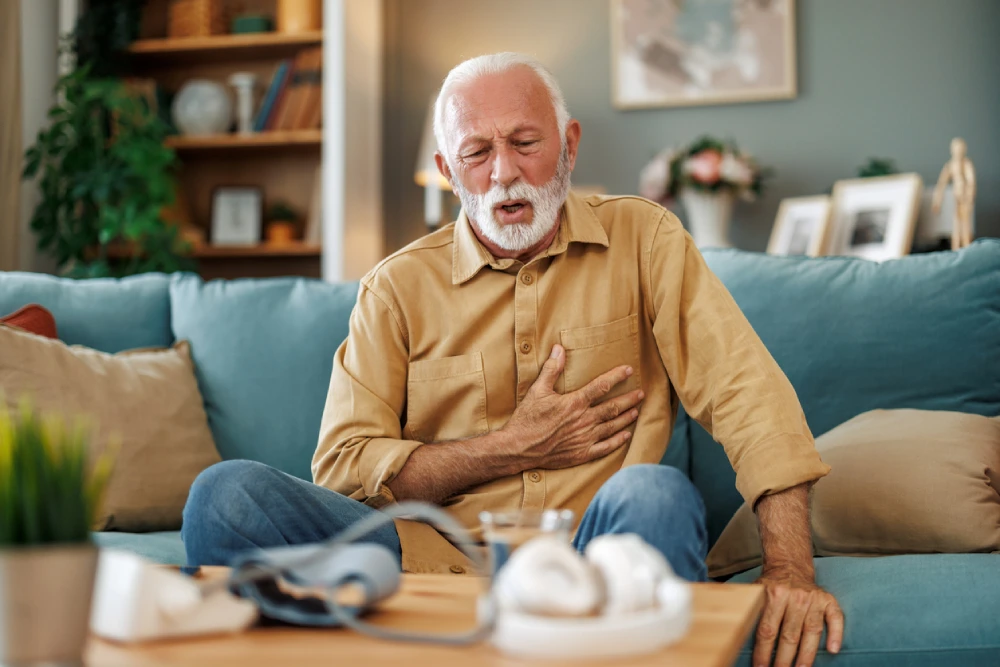If your blood pressure crept higher over the years, you probably didn’t feel a thing. That’s the danger of hypertension—it rarely comes with symptoms until it’s already caused serious harm.
Known as the “silent killer,” high blood pressure quietly damages the heart, blood vessels, and other organs, often without warning.
We’ve all had moments of dizziness, a pounding headache, or fatigue we brushed off. But what if these are more than just a stressful day or lack of sleep?
Understanding the signs of high blood pressure and making healthy lifestyle changes can save your life. In this guide, we’ll walk you through the most common hypertension symptoms, risks, and our top tips for managing blood pressure so you can stay informed and in control.
Understanding Hypertension – Definition and Prevalence
Hypertension, or high blood pressure, occurs when there is too much pressure on your blood vessels, making your heart work harder to pump blood through your body.
Over time, this excessive pressure can damage your blood vessels and organs, increasing your risk of heart disease, stroke, and kidney failure.
Your blood pressure readings are based on two measurements; the pressure when your heart contracts, called ‘systolic’, and the pressure when your heart relaxes between beats, called ‘diastolic’. These measurements are shown as a fraction, with systolic over diastolic.
Mayo Clinic outlines normal blood pressure as lower than 120/80 mm Hg (millimetres of mercury), while a measurement of 130/80 mm Hg or higher signals general hypertension.
Now, hypertension can fall into two main stages; Stage 1, with a measurement of 130-139/80–89 mm Hg and Stage 2, with a measurement of 140/90 mm Hg or higher.
In Canada, hypertension affects approximately 7.5 million people, or about 1 in 4 adults, according to recent data from Hypertension Canada’s 2024 Annual Report.
Despite its prevalence, a large portion of those affected are either unaware or not adequately managing the condition.
This is largely because hypertension doesn’t usually cause noticeable symptoms, especially in the early stages.
People can go for years without knowing they have high blood pressure until a serious complication, such as a heart attack or stroke, occurs. Routine blood pressure monitoring is essential for early detection and prevention.

Hypertension Symptoms: Types & Warning Signs You Shouldn’t Ignore
While hypertension may not present with many noticeable symptoms in the early stages, there are known signs that may hint at its development that can help you catch it early.
These symptoms can take many forms and are easy to disregard, so it’s crucial to be aware of them and be diligent in monitoring your blood pressure over the years.
Let’s explore some of the mild symptoms you may experience with high blood pressure, before highlighting some warning signs of a hypertensive crisis.
Mild to Moderate Hypertension Symptoms
Although many people with mild hypertension experience no symptoms, some may notice subtle warning signs. These include:
- Mild headaches, often at the back of the head and more noticeable in the morning.
- Dizziness or light-headedness, especially when standing up too quickly.
- Fatigue or feeling unusually tired, despite getting enough sleep.
- Blurred vision, which may come and go or remain persistent.
- Frequent nosebleeds, which are not always caused by dry air or trauma.
These symptoms are often vague and may be attributed to other causes. However, they shouldn’t be ignored, particularly if they persist.
Regular blood pressure checks are the only way to determine whether these signs are linked to hypertension.
Severe Hypertension Symptoms (Hypertensive Crisis)
When blood pressure reaches dangerously high levels—typically over 180/120 mm Hg—it’s considered a hypertensive crisis. This requires immediate medical attention. Symptoms may include:
- Severe, pounding headaches that feel unlike any typical headache.
- Shortness of breath, even at rest.
- Chest pain or tightness, which could indicate a heart attack.
- Nausea or vomiting, especially if accompanied by headache or visual disturbances.
- Confusion or difficulty concentrating.
- Sudden vision loss or changes in vision.
If you or someone you know experiences these symptoms, call 911 or seek emergency care immediately. A hypertensive crisis can lead to life-threatening complications such as heart failure, stroke, or organ damage if left untreated.
Long-Term Effects of Untreated High Blood Pressure
Leaving hypertension unmanaged can lead to irreversible damage to vital organs. Some of the most serious complications include:
- Heart damage: High blood pressure increases the heart’s workload, potentially leading to heart failure, arrhythmias, or heart attacks.
- Brain damage: Hypertension is a major risk factor for stroke and can also lead to cognitive decline and dementia over time.
- Kidney damage: The kidneys rely on healthy blood vessels to function properly. Persistent hypertension can cause kidney failure or the need for dialysis.
- Vision problems: Damage to the blood vessels in the eyes can lead to hypertensive retinopathy, resulting in blurred vision or even blindness.


10 Tips to Reduce High Blood Pressure
The good news? Hypertension is manageable, and often reversible, through lifestyle changes. Let’s explore our top ten tips to help you lower your blood pressure and maintain it long-term.
1. Maintain a Healthy Diet
A heart-healthy diet is your first line of defence. Prioritize:
- Fruits and vegetables, especially those rich in potassium, like bananas, sweet potatoes, spinach, and avocados.
- Whole grains, such as oats, brown rice, and barley.
- Lean proteins, including fish, chicken, tofu, and legumes.
- Low-fat dairy products.
Foods rich in potassium and magnesium help balance sodium levels and promote vascular relaxation, both of which lower blood pressure.
2. Reduce Sodium Intake
Too much sodium causes your body to retain water, raising blood pressure. Because of this, it’s important to ensure you don’t exceed the recommended daily amount (1500-2300mg).
Here are some easy ways to reduce sodium:
- Read nutrition labels and choose low-sodium options. Hypertension Canada recommends buying products that have less than 5% daily value of sodium on their label.
- Cook with herbs and spices instead of salt.
- Limit processed foods, canned soups, deli meats, and fast food as these are high in hidden sodium, and according to the Heart and Stroke Foundation, account for roughly 80% of our salt intake.
3. Stay Physically Active
Exercise strengthens your heart and improves blood flow, which can significantly lower high blood pressure.
As a general rule, try to aim for at least 150 minutes of moderate-intensity activity per week, such as:
- Brisk walking
- Cycling
- Swimming
- Strength training
Even short bouts of movement throughout the day can make a difference. Find something you enjoy and stay consistent.
4. Maintain a Healthy Weight
Excess weight increases strain on the heart and raises blood pressure. Losing even 5–10% of your body weight can lead to meaningful improvements.
Focus on sustainable habits through mindful changes such as:
- Portion control
- Whole foods
- Balanced meals
- Daily activity
Talk to a healthcare provider about a personalized plan if needed.
5. Limit Alcohol Consumption
Alcohol raises blood pressure and can also interfere with medications. Limiting your alcohol intake can be an easy way to support your blood pressure levels while helping you maintain a healthy lifestyle.
Try replacing alcoholic beverages with:
- Sparkling water with lemon
- Herbal teas
- Flavoured water
This swap supports your heart and hydration goals.
6. Quit Smoking
Each cigarette causes a temporary spike in blood pressure. Over time, smoking damages blood vessels, accelerates plaque buildup, and raises your risk for heart disease.
Quitting is one of the best decisions for your health. We recommend:
- Nicotine replacement therapy such as nicotine gum or patches
- Prescription medications
- Support groups and counselling
We understand that quitting smoking is a challenge and everyone finds success through different methods. Our PharmaChoice pharmacists can help guide you to resources and the stop-smoking aids that work for you.
7. Manage Stress Effectively
Chronic stress can trigger spikes in blood pressure and contribute to unhealthy habits like overeating or smoking.
Implement stress reduction techniques into your day such as:
- Deep breathing or mindfulness meditation
- Yoga or tai chi
- Journaling
- Spending time in nature
Set boundaries and take breaks when needed—mental well-being supports physical health.
8. Improve Your Sleep Quality
Poor sleep disrupts hormonal balance and raises the risk of hypertension.
To help promote healthy sleeping habits try following these easy tips:
- Go to bed and wake up at the same time daily.
- Avoid screens for at least 1 hour before bed.
- Create a calm, dark, quiet sleep environment.
- Don’t have caffeinated tea or coffee after 12pm.
- Quit eating 2 hours before bed and have your last drink 1 hour before bed.
If snoring or frequent waking is an issue, talk to your doctor about possible sleep apnea.
9. Monitor Your Blood Pressure Regularly
Regular monitoring helps you detect trends and evaluate whether lifestyle changes or medications are working.
To self-monitor your levels, use a home monitor, such as the Option+ blood pressure monitor available at many PharmaChoice pharmacies, or use the blood pressure machine available at many community pharmacies across Canada.
Be sure to:
- Take readings at the same time daily.
- Sit calmly for 5 minutes before measuring.
- Record your readings to share with your healthcare provider.
10. Follow Your Doctor’s Advice & Medication Plan
For some, lifestyle changes alone aren’t enough. Medications may be needed to keep blood pressure in a safe range. These may include:
- Diuretics such as Spironolactone or Hydrochlorothiazide.
- ACE inhibitors such as Ramipril or Perindopril.
- Calcium channel blockers such as Amlodipine or Diltiazem.
Never stop medications abruptly and always follow your doctor’s instructions. Combining medication with healthy habits offers the best long-term outcomes.

Take Control of Your Blood Pressure Today–Talk to Your Local PharmaChoice Pharmacist
Hypertension may be silent, but its effects are far from invisible. By paying attention to subtle symptoms, making proactive lifestyle choices, and working closely with healthcare providers, you can work toward and maintain healthy blood pressure, while supporting your overall health.
Remember, small steps make a big difference. Whether it’s eating more vegetables, moving your body, or getting better sleep, every action counts.
Visit your nearest PharmaChoice pharmacy for expert guidance, blood pressure monitoring tools, and wellness products to support your heart health. We’re here to help you every step of the way.



